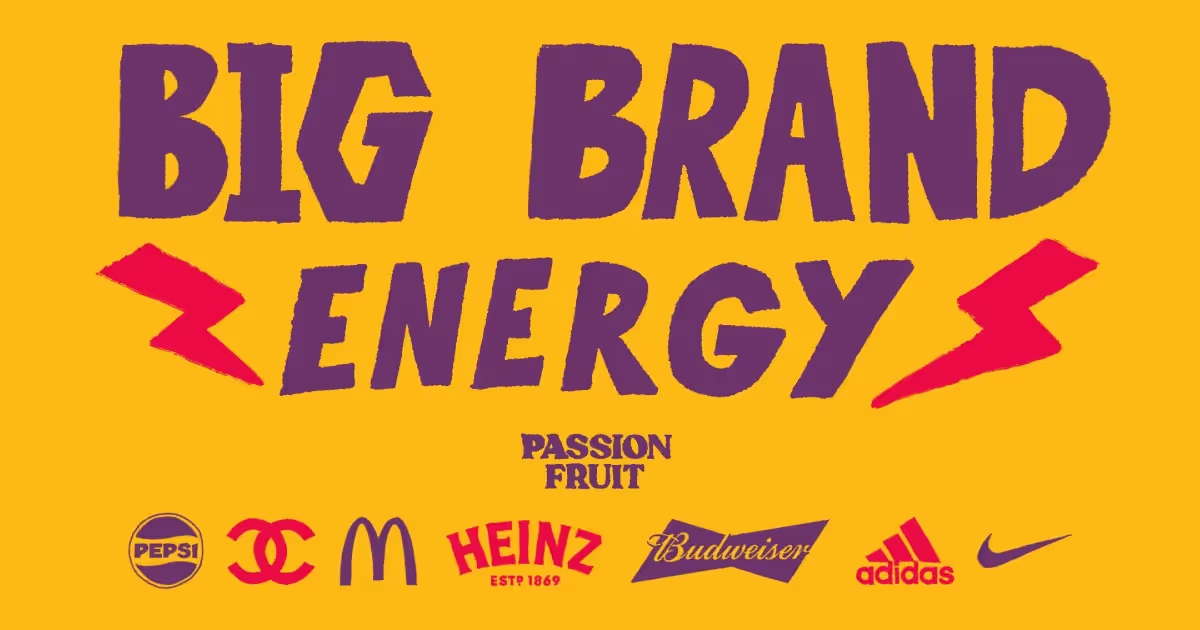SEO can be a transformative channel for Fintech businesses when it comes to acquiring new users.
With a smart strategy and slick execution, you can get your product in front of tens of thousands of potential customers each month - all without relying on third party ad spend.
In this sense, good SEO is a bit like investing, in that your initial costs provide dividends for years to come. This makes you more resilient to bear markets and unpredictable funding.
The problem? SEO can be hard, but it’s even harder in the fintech space due to the cut throat level of competition in Google’s results.
I’ve had the privilege of helping some of the most exciting fintech teams around the world with their SEO strategies. This article is the distillation of the most useful tips I’ve picked up from several years in the Fintech SEO trenches.
Let’s get into it!
A quick note before we start: Passionfruit has a roster of talented SEO freelancers on their books available at a week’s notice. If you’re a Fintech startup looking to explore what SEO can do for you, then hit the ‘Sign Up’ button top right of your screen!
1. Target people searching the best tool in your industry
Unless you’ve created a brand new category of product (very rare in today’s world), there will be lots of people searching for the best tool, app, platform or software in your space.
Examples:
‘Best digital bank’
‘Best trading software’
‘Best crypto exchange’
‘Best online payments platform’
Creating listicles targeting these types of keywords is a really good way to showcase your product in front of an audience who is ready to convert to a customer - I’ve found the conversion rates on some of these types of articles to be as high as 20%.
Talk about your product first, then list 5-8 competitors in less detail. Don’t be afraid to praise competitors in areas where they’re genuinely stronger than you - this will actually build trust and credibility. Just make sure to articulate your distinct advantages first.

If you’re a relatively new company entering a competitive space, these keywords might be too competitive initially.
If this is the case, research longer tail variations of these keywords which include modifiers.
Examples:
- ‘Best digital bank for digital nomads’
- ‘Best trading app for beginners’
- ‘Best crypto exchange for day traders’
- ‘Best online payments platform for wordpress’
These modifiers will have less demand, but will be way easier to rank for. When you’ve built up more authority in Google’s eyes, you can go back for the more competitive terms.
2. Target people searching for solutions
The chances are you’ve built your product to solve a problem. How might someone search for a solution to that problem?
Anticipating and answering these questions with blog content is a great way to get in front of a relevant audience.
Furthermore, these types of questions tend to be way less competitive in Google’s results than the more obvious commercial terms.
Examples of questions might be:
- How do I build an automated trading system?
- How do I file crypto taxes?
- How can I send money overseas without fees?
- What is the best way to accept payments online?
Write down all the questions you can think of (there might be hundreds!) then check if people are searching for them using your preferred keyword research tool.
When writing your article, structure it in a simple question answer format, with your questions in heading tags followed directly by your answer - this is great for capturing featured snippets.
And make sure it’s useful to someone regardless of whether they use your product or not.
You can give an elevator pitch towards the bottom of the article about how your product solves this problem, but always focus on adding value to the reader first.
Related: Fintech Content Marketing Expert Guide & Examples
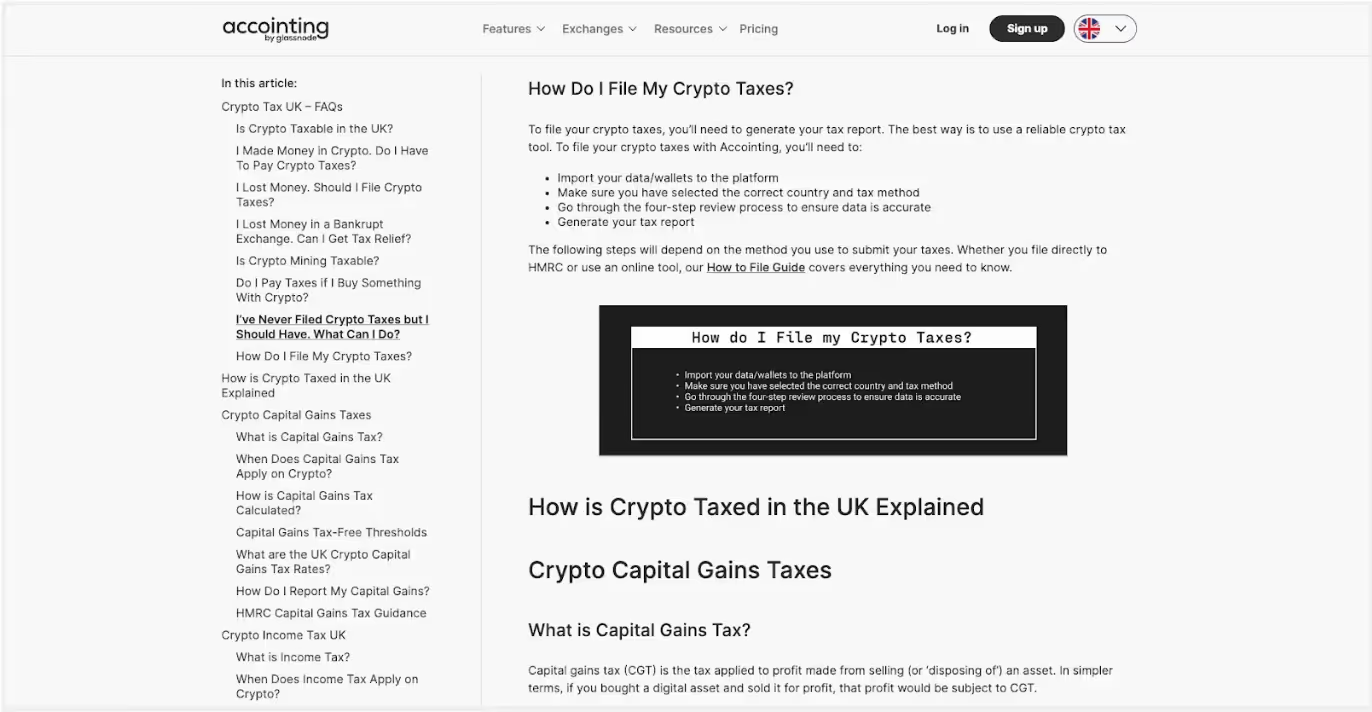
3. Invest in trust signals on your blog
Google introduced a concept called Your Money or Your Life on sectors where bad information can cause serious harm, such as medicine and finance.
This means you need to demonstrate you’re a trustworthy source with editorial oversight and high quality research.
The first way to do this is…by actually doing it. Invest in knowledgable writers and editors! Have your writers interview technical employees before writing up the articles in an easily digestible format.
Make sure to demonstrate it in your articles with author bylines and a ‘reviewed by’ label. These bylines should link to detailed author pages, with links to relevant social profiles.
Here’s a great example from Finder:

4. Make your content as visual as possible
Design now plays a crucial role in SEO content in competitive sectors.
If a lot of websites are targeting the same topics, you need to differentiate with the quality of your writing and insights, but also your user experience.
Adding illustrations, high res images, and data visualisations is a great way to make you content more engaging. It also makes people way more likely to link to or share your content.
Aim for at least two unique images per post, as well as a captivating featured image to improve shareability on social media.
Related: Fintech Social Media Marketing Expert Guide & Examples
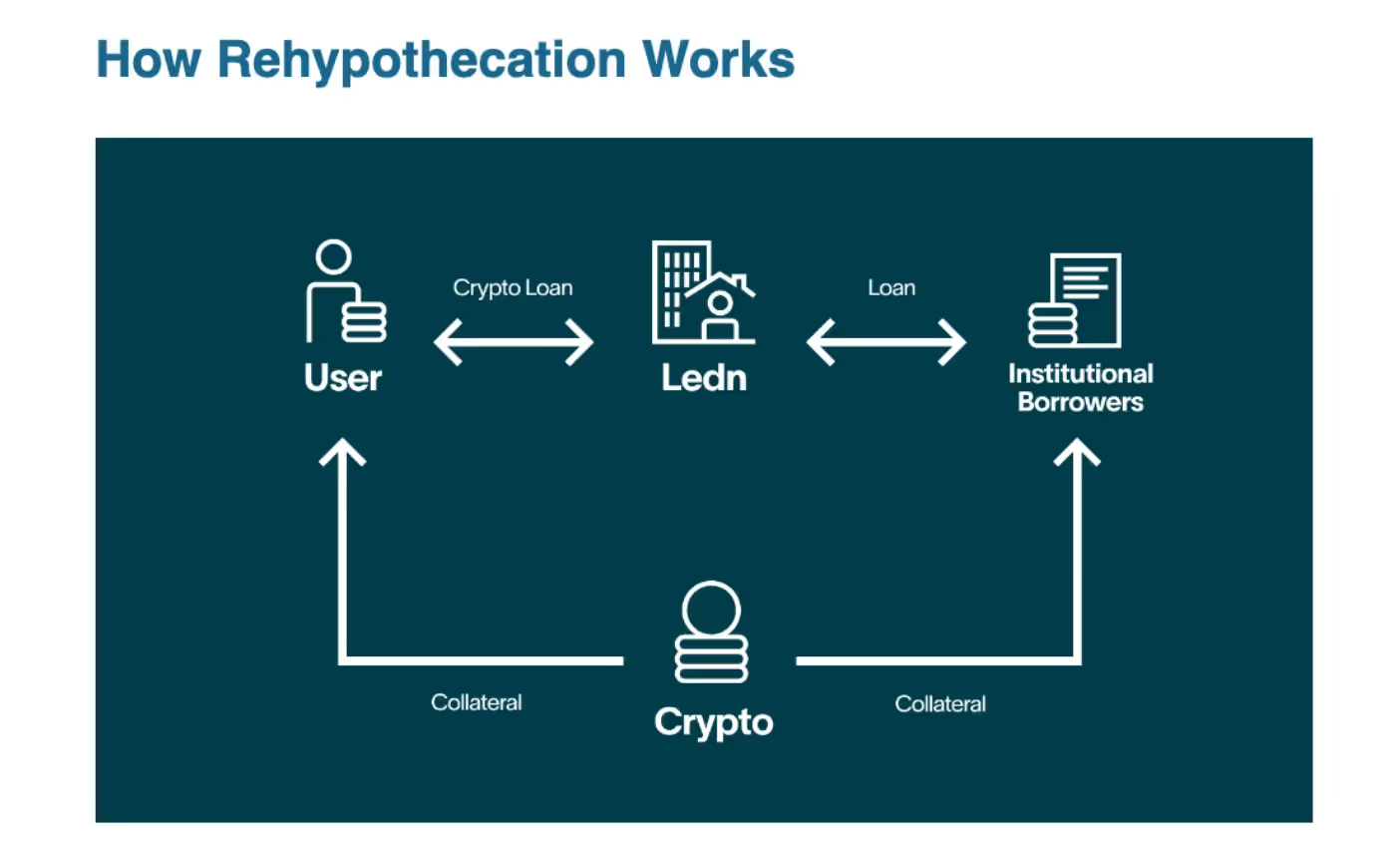
5. Create a glossary
This is a really simple way to boost traffic for relevant terms, as well as help build your topical authority in Google’s eyes.
Xero, an accounting software platform, is a great example of this - they generate half a million visits per year(!) from their glossary which defines terms like ‘what is liquidity’ and ‘fixed costs’.

Chat GPT is really good for generating ideas for the terms to include in your glossary. Try a prompt like:
Suggest 150 terms to include in a glossary about {Industry}
You can then even ask ChatGPT to write up definitions for each term if your content creation resources are stretched.
While I don’t recommend purely AI-written content for long form blog content, it works well enough for simple glossary entries.
Make sure to have a separate URL for each glossary definition! And an aggregation page where you link to all the terms to make it nice and easy for google’s crawlers to discover.
6. Create comparison pages between you and competitors
Type in your brand name with ‘vs’ appended to your keyword research tool and see which competitors people are comparing you to.
If you’re a relatively established brand in a competitive space, it’s likely to be between 3-5.

This is a great opportunity to create landing pages or blog posts that clearly articulate the advantages of your product over each of these competitors.
You’ll also be able to rank really easily for these keywords, given that Google is usually going to rank you prominently for queries which include your brand name.
If you’re not established enough yet for people to be comparing you with competitors, you can still do a version of this strategy by creating pages targeting people looking for alternatives to your competitors.

7. Create industry statistics pages
Manual outreach for link building is really tough in the finance space. Because the sector is so financially lucrative, site owners get hundreds of emails a day asking for links, and consequently will either ignore you or charge an extortionate amount.
One solution is to build passive link building assets, and none work better than statistics pages.
By aggregating and visualising statistics about your industry, and ideally even including your own data, your article becomes a source for journalists.
Here’s an example which Passionfruit collaborated on with Nansen - a blockchain analytics investment tool. We created a post targeting the term ‘defi statistics’, a term with around 150 searches per month.

Nansen’s DeFi statistics article uses a combination of proprietary and third party data.
So far it’s generated 324 backlinks, including from 90+ DR websites like Coin Telegraph and Finder. All without a single outreach email!
8. Explore programmatic SEO
Programmatic SEO is when you create a series of templated pages populated automatically by data. These pages are designed to rank for a series of repeatable keywords, such as different stock prices.
It’s a fantastic way to rapidly scale high quality traffic without editorial bottleneck, given you only need to design one template then let automation do the rest.
This is exactly what Robinhood do to great effect with their stock pricing dashboards, which generate over two million visits annually.
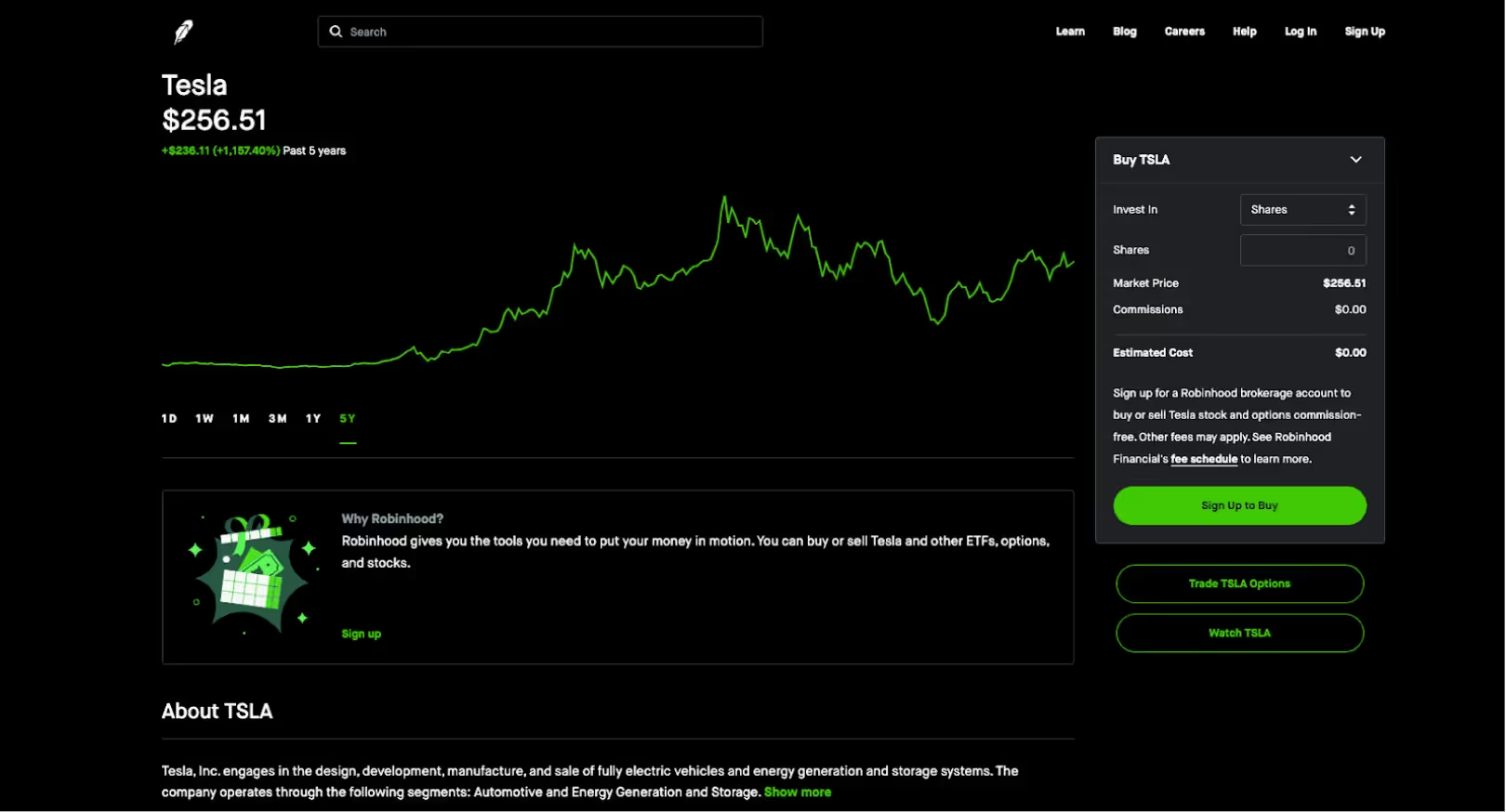
Optimise your pages for user experience, and make sure to include a clear CTA like the ‘Sign Up to Buy’ button in the example above.
Stock price pages are now pretty competitive, but there are plenty of other opportunities out there, like ETFs, commodities, indices, and many more. Schedule some time with your growth team to come up with some ideas.
9. Publish news about funding rounds
Doing PR around funding rounds is a really simple hack to get high quality backlinks which would otherwise be impossible.
High authority publications like TechCrunch always cover these types of stories, so it’s an open goal!
Identify relevant journalists at high quality tech publications and send out a press release, ideally linking to a blog post on your site which goes into more detail. This strategy also works for very significant product announcements!
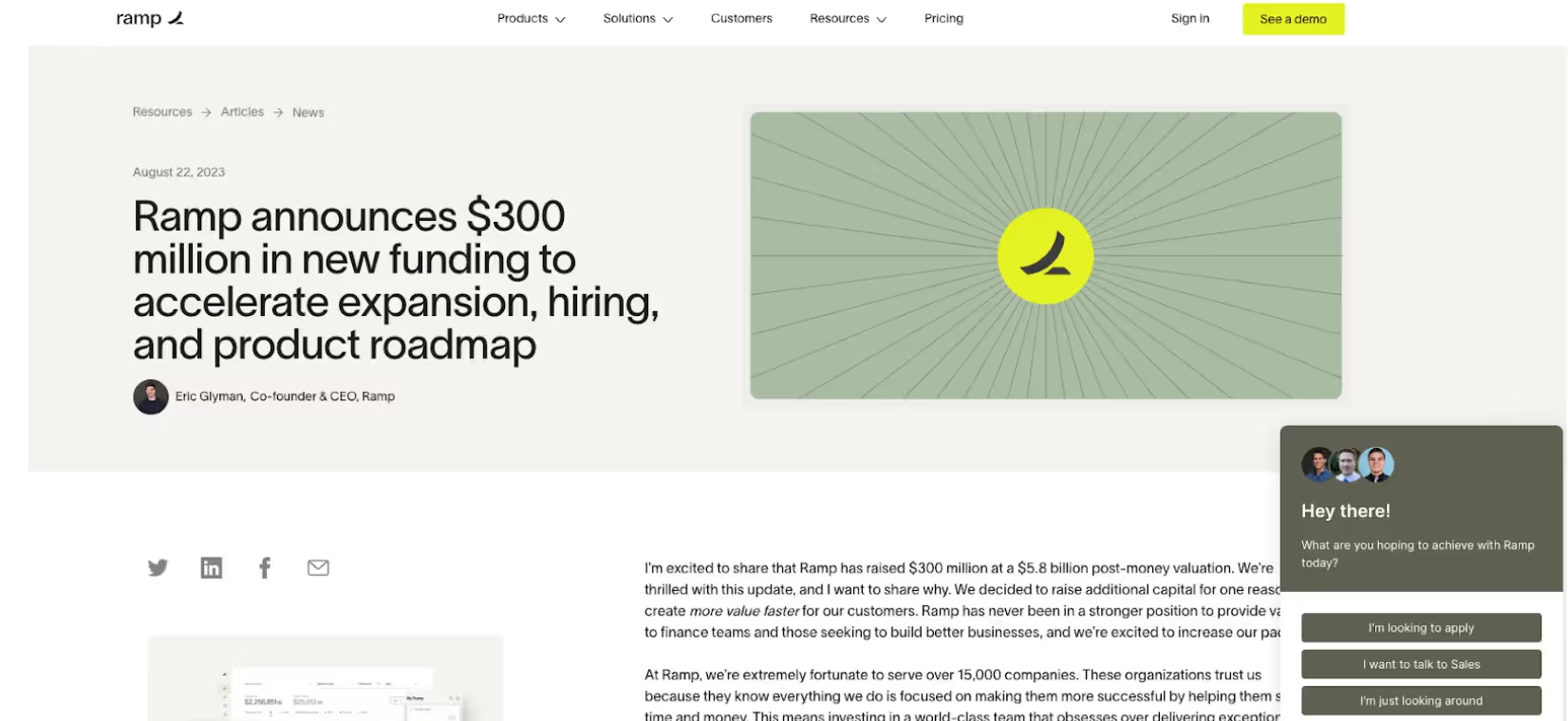
10. Launch a podcast
As mentioned above, Google relies more heavily on a huge number of nebulous trust metrics when it comes to deciding which websites to show for finance-related information.
This means you need to also be building your brand awareness and thought leadership status. The best way to do this on a budget is a podcast.
For a relatively low budget, you can produce a large body of premium content that you can repurpose into various mediums.
This is inevitably followed by backlinks, social media chatter and more searches for your brand name in google - all of which enhance your credibility algorithmically.
Make sure to create a custom designed landing page which links to the different platforms your podcast is available on and aggregates the episodes individually. This makes it easier for people to find, and creates a nice linkable asset in the process.

11. Jump into reddit conversations
Tech-savvy people disproportionately append reddit to their queries when searching for advice on the best product to use. Which means if you’re a fintech company you need to be covering this angle.

See what people are saying in these threads and jump into the conversation!
It’s also likely people are using reddit to find human reviews about your product. Make sure you’re also part of the conversion for these threads too.
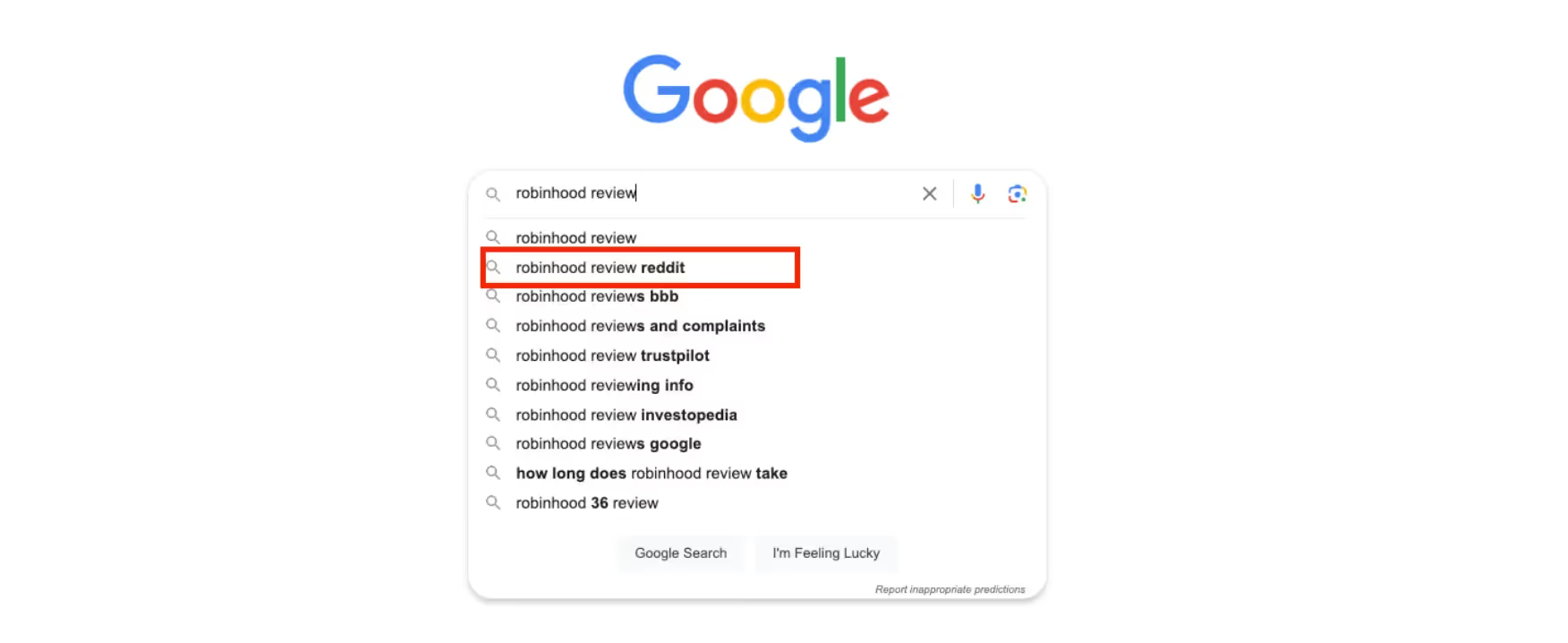
Note: Reddit users are hyper sensitive to anything that could be perceived as ‘shilling’ (i.e. posting for personal financial gain) - my advice to be up front that you work for the company if mentioning your product and try to add genuine value to the conversation. Redditors usually respect transparency!
12. Add Schema to stand out
Schema markup is a bit of code you can add to your site to help search engines understand your content more easily.
More importantly in my opinion, it allows you to stand out on Google’s results page with added features.
For most fintech companies I would recommend the SoftwareApplication schema to describe the website as a whole. Most importantly though, I make sure to include the AggregateRating schema, which gives your website these nice shiny stars:

These are great for Click Through Rate, which is an important user engagement metric Google looks for when deciding who should be at the top of results.
13. Build a calculator tool
Calculators are another fantastic passive link building asset - they can also be excellent for conversions.
Take this pension calculator example from Pension Bee:

It’s generated over a hundred quality backlinks and brings in a ton of high quality traffic. It also adds a huge amount of value to users!
Other examples might be:
- Loan interest calculator
- Investment calculator
- Savings calculator
- Credit card repayment calculator
…the list goes on.
Make sure not to skimp on UX design here! The tool must be functional and visually appealing for maximum effect.
Closing thoughts
SEO is such a big topic that it can easily become daunting! My advice is to focus on one or two of these initiatives to begin with and measure the results - then when you can prove the impact, you can more easily unlock resources for other projects.
And if you want some help, don’t hesitate to reach out to Passionfruit!






